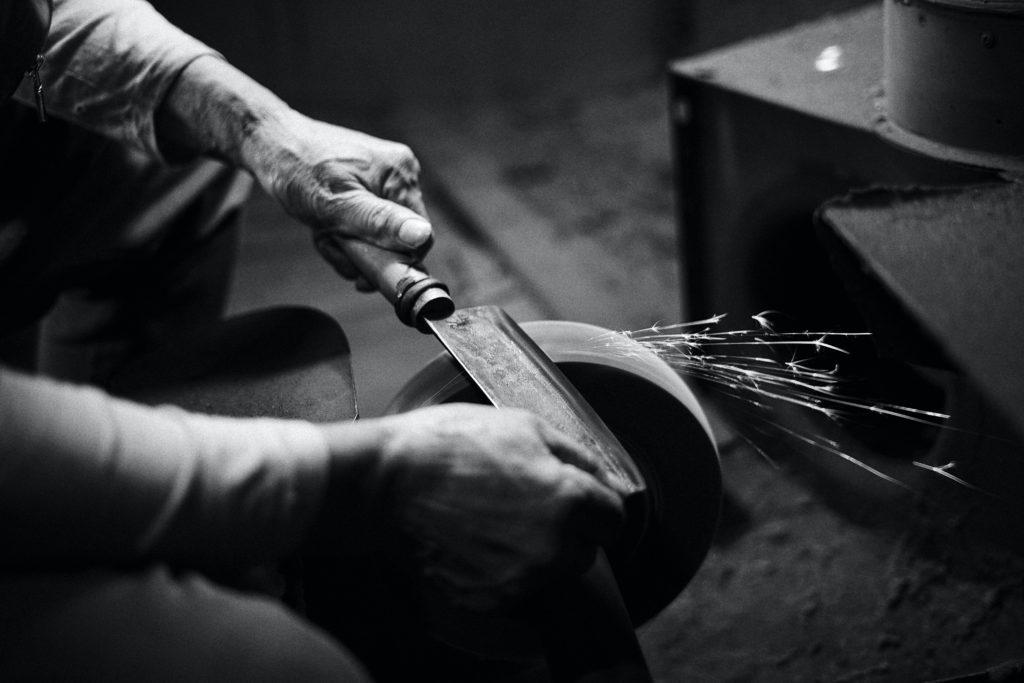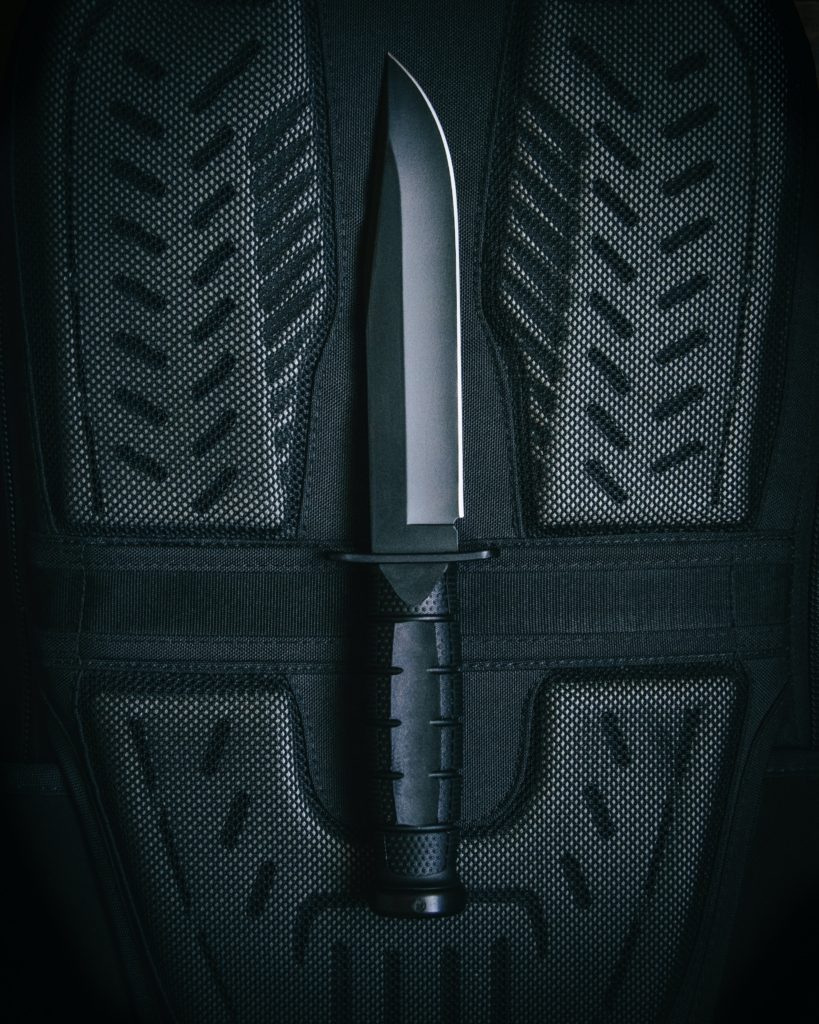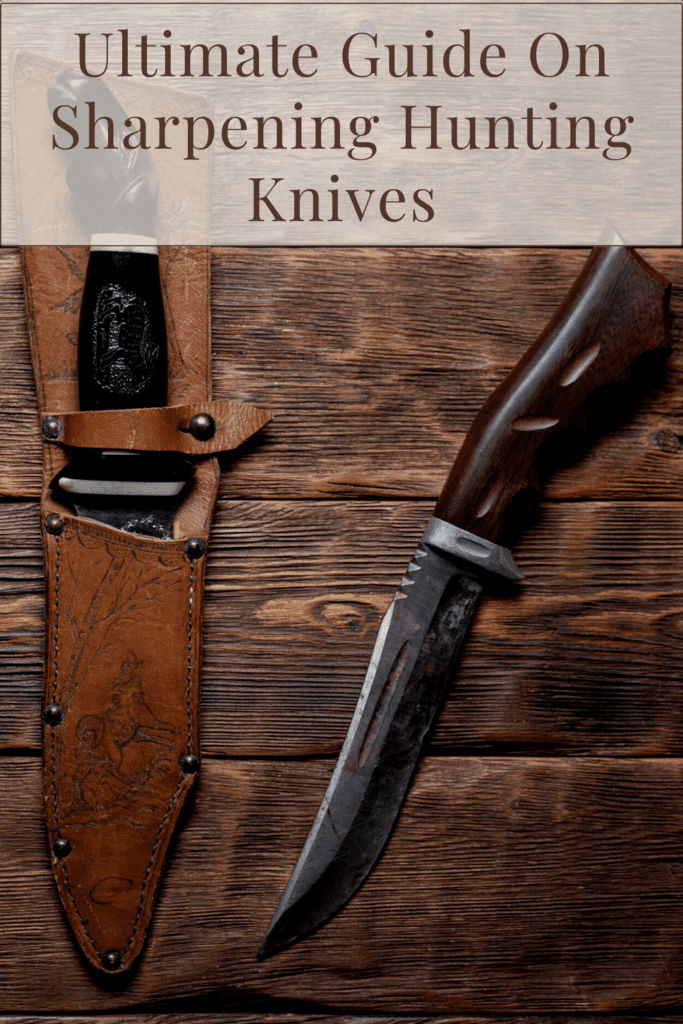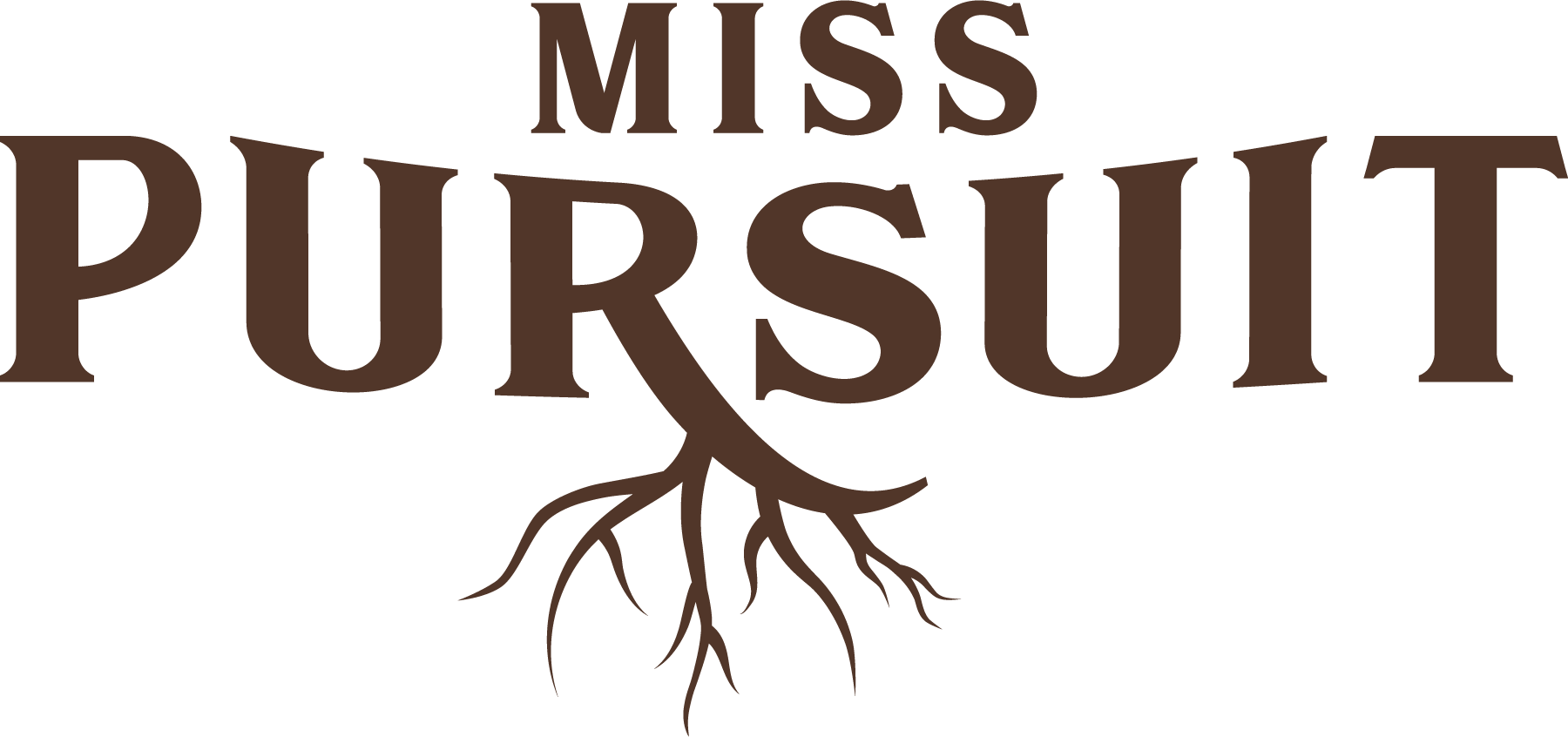Hunting knives are an essential tool for any hunter. They are used for skinning and dressing game, preparing food, and making shelter in the wilderness. However, even the highest quality hunting knives can lose their sharpness over time. A dull knife can make hunting and other outdoor activities more difficult, dangerous, and time-consuming. Maintaining your knife is therefore a crucial skill for any outdoorsman. It not only helps retain its performance and durability, but also ensures safety and efficiency while in the field.
Mastering the art of sharpening hunting knives is just as important as owning the right equipment and being proficient in hunting and outdoor survival skills.

Sharpening a hunting knife typically involves using a sharpening stone or honing rod to grind away any dull or damaged areas on the blade's edge and to create a new, sharper edge. So in this post, we’ll tell you everything there is on sharpening hunting knives.
How the Type of Knife Affects the Sharpening Process
The type of hunting knife can have a significant impact on the sharpening process, as different blade designs require different sharpening techniques. Here are some examples:
Drop point knife: A drop point knife typically has a curved edge, which can make it challenging to maintain a consistent angle while sharpening. A sharpening stone or honing rod with a rounded edge can be needed to follow the blade's curve and ensure an even sharpening.
Clip point knife: A clip point knife's straight edge makes it easier to sharpen, as a straight-edged sharpening stone or honing rod can be used. However, care must be taken to ensure that the tip of the blade is not over-sharpened and becomes too thin and fragile.
Gut hook knife: The unique shape of a gut hook knife's blade requires special attention when sharpening. The hook's edge should be sharpened separately from the rest of the blade using a sharpening stone or rod that is small enough to fit into the hook's groove.
Bowie knife: The length and curve of a Bowie knife's blade can make it more challenging to sharpen, as it requires a sharpening tool that can handle its size and shape. A longer sharpening stone or honing rod may be needed to maintain the blade's curvature while sharpening.
Skinning knife: A skinning knife's narrow blade is typically easier to sharpen, but it may require more frequent sharpening due to the blade's thinness and flexibility. A fine-grit sharpening stone or honing rod may be needed to maintain a sharp edge without removing too much material.
In general, it's essential to use the appropriate sharpening tool for each hunting knife type and to maintain a consistent angle throughout the sharpening process. This will help ensure a sharp and durable blade that can perform its intended tasks efficiently and safely.

Different Types of Sharpening Tools
There are various types of sharpening tools, each with advantages and disadvantages. The following are some of the most common types of sharpening tools used for hunting knives:
Sharpening stone: A sharpening stone, also known as a whetstone, is a traditional sharpening tool that comes in different materials, such as natural stone, diamond stone, ceramic stone, and synthetic stone. It requires the user to apply oil or water to the stone's surface before sharpening.
A sharpening stone is versatile and can be used to sharpen all types of hunting knives, but it requires some practice and patience to use effectively. In order to get the most out of it, you need to maintain a consistent angle.
Honing rod: A honing rod is a long, cylindrical rod made of steel or ceramic. It is used to hone and straighten the blade's edge rather than sharpen it. It is ideal for maintaining a sharp edge and can be used for all types of hunting knives.
Electric sharpener: An electric sharpener is a quick and easy way to sharpen a hunting knife. It typically features abrasive belts or discs that grind away dull areas on the blade's edge. Electric sharpeners are fast and efficient, but they can remove too much material from the blade if not used correctly.
Pull-through sharpener: A pull-through sharpener is a compact, portable tool that features two sharpening stones that are pulled through the blade to sharpen it. They are easy to use but are less precise than other sharpening tools, and they can wear out the blade quickly if used too often.
Guided sharpening system: A guided sharpening system features a sharpening stone or rod that is mounted on a guide, which ensures a consistent angle while sharpening. It is a good option for those who are new to sharpening or who want a precise and easy-to-use tool.
Regardless of the sharpening tool chosen, it's important to maintain a consistent angle while sharpening and to use the appropriate grit for the blade's condition. With the right tool and technique, hunting knives can be sharpened to a razor-sharp edge that will perform efficiently and safely in the field.
Preparing Your Hunting Knife For Sharpening
Before you start sharpening your hunting knife, there are a few things you should do to prepare it.

Clean the blade: Use a clean, damp microfiber cloth to wipe down the blade and remove any dirt, debris, or residue. Make sure the blade is completely dry before you proceed.
Check for nicks and chips: Inspect the blade for any nicks, chips, or other damage. If you find any, use a file to smooth them out before you start sharpening.
Determine the angle: Look up the manufacturer's recommendations or use a sharpening guide to determine the correct angle for your knife. This is important to ensure that you don't accidentally damage the blade or make it too sharp for its intended use.
If the manufacturer has not specified the sharpening angle, then a good start would be to use the coin trick to determine the angle.
Choose a sharpening method: There are several methods you can use to sharpen your hunting knife, including sharpening stones, electric sharpeners, and sharpening rods. Choose the method that works best for you based on your skill level and the type of knife you have.
If you’re a beginner then a guided sharpening system or an electric sharpener would be a better option.
Once you've prepared your hunting knife in this way, you're ready to start sharpening. Be sure to follow the instructions for your chosen sharpening method carefully and take your time to ensure that you achieve the best possible result.
How To Sharpen A Hunting Knife Using A Whetstone
Begin by holding the sharpening stone securely on a flat surface with one hand. Place the knife blade against the stone at the desired sharpening angle (usually between 20 to 30 degrees).
Apply light pressure to the blade and move it back and forth along the stone in a sweeping motion, maintaining a consistent angle. Do this for a few strokes on one side of the blade before moving to the other side.
Continue the process, alternating between sides and increasing the pressure slightly with each pass, until the blade is sharpened to your desired level. You can test the sharpness of the blade by carefully running your finger along the edge.

Once you have achieved the desired sharpness, use a honing rod to remove any remaining burrs and polish the edge of the blade.
Finish by wiping the blade clean and applying a light coating of oil to prevent rust and keep the blade in good condition.
Remember to use caution when sharpening a hunting knife and wear protective gloves if necessary. Take your time and ensure that you maintain a consistent angle throughout the sharpening process to achieve the best possible results.
Additionally, the best stone to sharpen a hunting knife would be a medium grit (150-220 grit) stone. It can effectively remove minor nicks and dullness while still preserving the blade's sharpness and edge retention. Using a coarse grit stone can remove too much material and reshape the blade, leading to a shorter lifespan and the need for more frequent sharpening. Conversely, using a fine grit stone can polish the blade and refine the edge, but may not remove enough material to sharpen a dull blade.
How To Keep Your Hunting Knife Sharp For Longer Periods of Time
Keeping hunting knives sharp for longer periods of time requires proper care and maintenance.
Here’s what you need to do:
Use a honing rod: A honing rod can be used to keep the blade sharp between sharpenings. Run the blade along the honing rod at the correct angle, and it will realign the edge and keep it sharp.
Store the knife properly: Store your hunting knife in a dry place, away from humidity, moisture, and extreme temperatures. A leather sheath or a wooden block is ideal for storing a hunting knife.
Avoid using the knife for tasks it's not intended for: Using your hunting knife for tasks such as prying, digging, or chopping can damage the blade and affect its performance.
Sharpen the blade regularly: A hunting knife requires regular sharpening to maintain its edge. Use a sharpening stone or an electric sharpener to sharpen the blade. The frequency of sharpening depends on how often you use the knife.
Now you know how to sharpen hunting knives.
Having a sharp hunting knife is essential for any hunter. It ensures a clean and precise cut and makes field dressing and skinning easier and safer. Additionally, regular sharpening and maintenance of your knife is necessary to ensure optimal performance.
It is also essential to experiment with different techniques and tools to find what works best for you. With patience and practice, you can improve your sharpening skills and keep your hunting knives sharp for longer periods of time.
In summary, a sharp hunting knife is crucial for any hunting expedition, and proper sharpening and maintenance can significantly affect its performance. By following the tips and techniques mentioned above, hunters can ensure that their hunting knives are always in optimal condition and ready for use.
